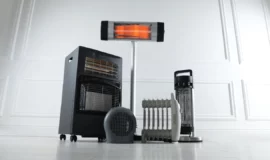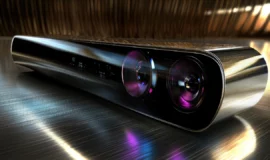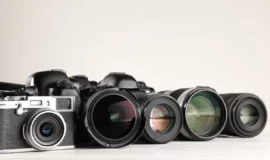
According to the National Library of Medicine, Pakistan ranks 80 among 122 nations regarding drinking water quality. Population growth, overcrowded cities, no proper mechanism for discarding sewerage waste, and industrial chemicals are why tap or well water in Pakistan isn’t safe for any kind of consumption.
One way to purify the contaminated water is by installing a water filtration plant in your home. If you think going to a water filtration store and picking any water filtration plant is enough, you might be wrong.
In this blog, we’ll give you in-detail information on how to choose the best water filter system for your home.
Factors to consider before choosing a water filtration plant
Before choosing a water purifier system for your home, the most important thing you need to consider is identifying your prime usage. The questions below will help you simplify your decision.

1. Sink Drinking Water Filter or Whole House Filter
Many people in Pakistan only use the first model, which is a sink drinking water filter. Such water filters are either installed under the sink or on top of the tap. These ensure the water coming out from the tap is contamination free. Decide if you just want to have your kitchen water contamination free or if you want your whole home supply to be free from viruses and bacteria.
Both of these require different types of water filtration systems,
1 POU (Point of Use) water filtration:
This system is installed around or under your sink. It only filters the concerned water supply for your kitchen.
2. POE (Point of Entry) water filtration:
This water filtration system cleans the water as it enters your house. It is installed at the point of entry of water in your home. This water filter for home works for you if you want the whole water supply of your house to be contamination free.
2. Public water supply or private well system:
If you are only using a public water supply in your home, you might have to be extra careful. The public water system in Pakistan is highly deregulated without any prior filtration and cleaning process. It’s also the one with the most contamination due to pipe leakage etc.

Other than that, these pipes are underground and never get cleaned. There is corrosion and molds on the inner walls, basically a perfect culture for bacteria to grow.
If you have a public water supply, you need to install a water purification system. This water is not safe for daily home chores like washing dishes or clothes.
Even if you have a private well, aka bore in the ground for private water supply, it’s still not drinkable. It might have less viral contamination, but the bacteria are still there. Studies have found that 40% of bore water has E.coli or coliform bacteria present in it.
These bacteria are responsible for severe diseases like Urinary Tract Infection (UTI), diarrhea, and other respiratory illnesses.
3. Water Usage
Which water filtration system to buy would depend upon your daily usage. Assess your water consumption per day, how many rooms you have, and how many people live in your home.
Calculate the total water consumption of your home per day and then decide the size and output for your water filtration plant. On the safer side, don’t settle for an equal or lower output system; always choose a slightly higher output system to save yourself in the future.
If your usage is only a single tap for drinkable water and 1-2 showers, you are good with the POU water filtration system. However, if you have usage more than that, it’s preferable to install a POE water filter system for your home.
Common contaminants, bacteria, and impurities present in tap water
Depending on your water supply, it may contain harmful chemicals, heavy metals, and microbes. Here are some of the most common and their impact on human life.

Heavy metals are present in water in small doses. The most common metals in water are lead, aluminum, iron, cadmium, arsenic, chlorides, and fluorides. These metals are highly toxic and cancerous.
Leakage in water pipes causes them to be contaminated with human waste and sewerage. Other than it’s disgusting, it’s toxic and undrinkable.
Microorganisms including protozoans, Legionella Pneumophila, and strains of E.Coli are the most common disease-causing bacteria present in the tap water. If you have infants and elderly people in your home, value them and do not use tap water directly. Not even for washing clothes or dishes.
These microorganisms are responsible for severe diarrhea, pneumonia, hot tub rash, hepatitis, cholera, dysentery, Giardia, nausea, headache, and several urinary and respiratory illnesses.
Types of water filtration plants
There are several types of water filtration plants you can install at home. Some examples include,
- Mechanical filter
- Absorption
- Ion-Exchange
- Reverse Osmosis
- Inline Water filters
- Drop-in filters
- UV filter system
However, the most prevalent in Pakistan is RO (Reverse Osmosis) water filter and UV filter system.
Let’s have a look at these two.
1. Reverse Osmosis
RO filtration system is a three-step process that removes sediments and chemicals by passing them through semipermeable membranes. The water is first passed through a sediment filter that removes particles like rust, dirt, etc.

Then it’s passed through a carbon filter that extracts volatile Organic Compounds (VOCs), chlorine, and similar compounds responsible for the foul odor and taste of water.
At last, the water is then forced to pass through a semi-permeable membrane to extract any remaining total dissolved solids (TDS). After screening through this last filter, 98% of TDS are removed.
Here is the list of compounds removed by the RO filtration system,
- Fluoride
- Salt
- Sediment
- Chlorine
- VOCs
- Arsenic
- Pesticides and Herbicides
With the proper use of filters, RO filtration plants can remove bacteria and viruses from the water. Hence making it a very effective solution for drinkable water at home.
The price of RO water filters varies according to the size and brand you are going with. However, a medium-size water filter can cost you around Rs.20,000 to Rs.30,000.
2. UV filter system
The UV filter system is most preferred for POE water filtration systems. As the name suggests, a UV water purifier treats contaminated water with UV light. UV light destroys microbial DNA making them unable to reproduce and hence cause a disease.
Unlike the RO filtration plant, the UV filter system doesn’t filter any particles, chemicals, or heavy metals present in the water. The only purpose of the UV filter system is to kill any living organism by ruining the DNA and RNA of the microbes.
Like the RO water purification system, UV water filters vary according to the size and brand you are going with. However, a medium-size water filter can cost you around Rs.25,000 to Rs.30,000.
Common types of Water filtration systems for Home
Now that you know your prime usage and the most common filtration systems, it’s imperative to discuss which type of water filtration system you want to install according to its location.

1. The Faucet Mount Water Filter
This is a small and handy filter system installed at the faucet. In simple terms, a faucet is a tap. And the water filter system is connected to the open side of the fixture, cleaning the water coming out of the tap.
These are easy to install, simple, inexpensive, and do not require any power supply to run. It’s a quick way of cleaning the water. However, bear in mind these are also the ones that may need replacing.
2. Countertop Water Filters
As the name suggests, countertop filters sit on the countertop while connected to the faucet. The countertop water filter system uses a proper filter module that filters the water. Often a carbon activated filter is used, which is washable and reusable. This filter system is safer, healthier, and requires less maintenance making them a good choice.
3. Gravity Water filters
Gravity water filters are required to be filled with water which then cleans itself by passing it through multiple layers of filters with the help of gravity. These purifiers are present in various sizes having different water filtering capacities.
Gravity water filters are slow and take a lot of time to purify water.
Now let’s move to more conventional water filters here in Pakistan.
4. Under Counter Carbon Block Water Filters
This water purifier is installed under the counter, directly connected to the water supply system installed under the sink. However, do not expect the same level of effectiveness as other water filters on the list.

These are complex filtration systems and require a plumber to install.
5. Multistage Water filters
This is the most common water purification system in Pakistan. It’s a set of water filters attached to the faucet providing clean drinkable water. These advanced filtration systems often have multiple filter technologies and come in various sizes.
Like the under-counter filters, a plumber must properly install these.
Which filtration technology and the type of filters would you choose and why? Let us know in the comments below.








Leave a Reply